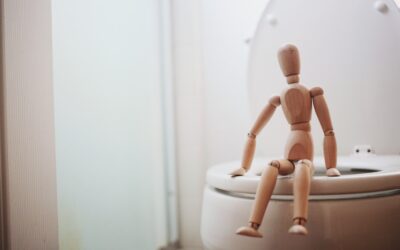While if you’ve got a working toilet in Ottawa, you know the issue we’re discussing. Being a largely unspoken aspect in your bathrooms is rarely talked about or even mentioned. However, we would like to think that they’re not there; they’re among the most significant inventions in the history of humanity. If left untreated for too long, toilets can eventually suffer problems, and some could cause water waste or water damage.
We’ll tell you all you require to know about how to prevent your toilet from leaking, including:
- How to use a toilet
- Why fixing a running toilet as soon as feasible is crucial
- Based on each cause, remedies for running toilets
- Preventative steps you may take to keep your toilet from overflowing in the future
How Do Toilets Work?
The most challenging aspect of understanding how toilets work is understanding the terms for the various components. The parts that get included comprise:
Flush Handle: As the name implies, this is the lever you use to flush the toilet. When you press the button, the flapper gets lifted, does the valve opens, allowing water to pour out of the basin.
Flapper: Flappers can get described as plastic or rubber plugs in your toilet’s tank. Flappers are linked to flush handles through the flapper chain and the flush arm. When the handle for flushing gets opened, it expands to release water and closes to stop it.
Rim Jets and Siphon Jets: When water gets released by the flapper, the rim jets and siphon jets direct that water to the toilet bowl.
The Float Arm and the Float Ball: When the water in your tank drains and your float ball gets lowered, it falls and causes its floating arm to open the valve that fills the tank. As the tank fills up, the ball float expands and triggers the valve to close again. Fresh water flows across the supply pipe into the fill tube and the toilet tank.
Overflow Pipe: Connected to valves for filling, the overflow pipes stop the bathroom from being flooded by removing excess water from the tank if their float ball fails.
To safely and properly dispose of waste within your home, each component works in tandem with gravity. This clever system is highly complex, with many things resulting in the necessity of doing a running toilet.
What Is the Reason It’s Essential to Fix the Running Toilet?
There are toilet leaks that are so insignificant that you might not even realize that you’re experiencing problems. Homeowners and landlords typically discover they’re dealing with a toilet problem when they receive their utility bill.
A moderately-sized leak in your toilet can waste up to 250 gallons of water each day, or 7500 gallons every month. This massive rise in water usage will significantly impact the amount of money devoted to utility providers. Having an unrepaired toilet fixed immediately is essential to ensure that water is well-spent and to keep you from paying for a service you’ve yet to use. In addition, the longer a leak persists more likely that the rest of your home could be affected by water damage. Drywall and floorboards that have to get soaked are other expensive repairs you can include on your list of repairs.
Suppose the damage is severe enough to warrant a replacement. In that case, you can consider a water-saving toilet installation to conserve cash on your electricity bill for the next few years. A trained plumber will need to get hired to handle more complicated toilet repairs, which will cost money in parts and time, but the cost will be far less than fixing a leaky bathroom.
Toilet Won’t Stop Running? Try These Fixes for the Most Common Causes
The most typical indicator of a running toilet is the fact that it’s running water. Suppose the bathroom isn’t an area of your house that gets regularly utilized. In that case, you should realize that it’s always running, particularly when running exceptionally slowly. A different indication of a running toilet is a bill from the utility company that is significantly more expensive than anticipated.
When you discover an unsanitary toilet, how can you identify the reason? The most frequent causes of a leaking or leaky toilet are:
- Leaky flapper
- A damaged floating ball
- A broken fill tube
- A worn gasket
These issues get caused by old age or improper installation. Suppose you’ve recently put in your toilet or, on the other hand, cannot recall the date you installed it or changed any components. In that case, the run-down bathroom could result from one of these reasons. The process of determining which is the cause is where the problem becomes complicated. To pinpoint the root of the issue and fix them quickly, you can depend on the services of your accredited plumber or use these troubleshooting suggestions.
Flapper Troubleshooting
If a damaged flapper is a reason for your leaking toilet, you’re in luck. The flappers made of rubber are incredibly inexpensive to replace and can get repaired without effort.
It would be best to examine their chain when attempting to solve problems with flappers. A short chain will stop your flapper from completely sealing the toilet tank and bowl, which causes water to continue to flow in the bowl. How can you tell when your flapper isn’t long enough? In general, flapper chains should only have a little looseness when in the closed position. If there isn’t any slack, the chain needs to be longer. A lot of space means the chain’s length is. Instead of tinkering on the chain, go to the local hardware store and purchase a new one. If the new chain is too long, you can use cutters to trim any lengths that are not required.
Do your toilets not run continuously but flush without anyone else within the space? We need to get convinced that you do. The most common reason for sudden flushes is that the rubber flapper on your toilet has started to decay and break down, enabling water to leak slowly into the bowl. Be assured that you aren’t ghosts.
There are universal flappers available can be used on various types of tanks. For the proper flapper to replace, turn off your supply line, remove the flapper you have been using, and bring it to the local hardware store. It will enable you to match the flapper with an appropriate replacement without making numerous trips between stores.
Float Ball Troubleshooting
Does your toilet flapper’s chain appear to be the correct size? Does the flapper itself appear to be in excellent condition? A flapper that can’t seal might not be due to an issue with the flapper but instead with your floating ball. To test this hypothesis, remove the tank lid and raise the floating arm. If the toilet ceases to run instantly, you’ve discovered the source of the problem.
Your toilet float is too high. Clean your toilet and check if the fill gets stopped at the fill mark. It should get a written print somewhere inside the tank. If you’re struggling to read it, use a pencil and draw the same line on the overflowing tube. If there’s a problem with the float, the flow will not end at this moment.
To alter the float height, you’ll need either do one or the other things based on the age of your toilet. The latest bathrooms generally have an adjustable component directly attached to the rod. For older models of toilets, take a plier and bend the float arm to lift or lower it. Whatever type of toilet you own, make minor adjustments and flush between every adjustment until you reach the best outcome.
Troubleshooting the Fill Tube
If your filling tube gets too large, you might constantly pump water through the toilet bowl and tank. The fill tube must be greater than the water level, or the excess fluid must get forced into the overflow pipe. Verify that it gets placed so that water flows through the overflowing tube. If not, you’re running toilet may be due to an error in the placement of the fill tube.
The best method to fix the damaged fill tube is to replace it with a brand-new one. If you are installing a brand-new box, you need to push it into the valve for filling to ensure that it is snugly fitted. It should curve upwards over the overflow tube and just a few inches above it. Too long? All you have just cut is a piece of tubing from the other end to achieve the correct size.
Wearing Gasket Troubleshooting
Gaskets get used to seal various plumbing fixtures. Your toilet is no exception. The gasket seals the gap between the bowl and tank to prevent the water from getting in between them.
Fortunately, a damaged gasket is relatively inexpensive to replace. It will require the disassembly of some parts, so you might need assistance from a plumber to return the system to where it gets meant to be.
After you’ve completed repairs, it is possible to check to ensure that water has stopped flowing from the tank to the bowl outside of the flushes. In this case, you’ll need to know that your plumbers will introduce the test using food coloring. For this test, go through your baking cabinet and add paint drops to your toilet tank. After a couple of hours, take a look at the bowl. If there’s some color, you have an issue with your tank. If it’s not, you’re good to go! It gets recommended to have a plumbing expert examine it for you.
Preventing a Running Toilet
To keep your toilet in good order, all it takes is a bit of maintenance now and then. Through periodic maintenance, investing in plumbing inspections that prevent leaks to avoid dealing with a broken toilet and the hefty monthly bill cost. The top tips we offer for sanitation tips include:
Don’t Flush Anything Down Your Toilet Besides Paper Towels
The flushing of different items into your gutter, even those supposed to be flushable wipes, could cause a sewer line blockage. When clogs happen, the sewer system could back up, leading to indoor plumbing for wastewater that could harm your health and make an impression on your savings account.
Regularly Inspect Your Bathroom Floor for Moisture
Sometimes, water accumulates in your toilet bowl and on the feet due to condensation from an intense shower. If you notice a slight tinge of wetness on your bed and nobody has washed it recently, this could indicate concern. To determine if that is the cause, look at the supply line that passes through the toilet’s wall. Whatever the source, it is best to contact the local plumber.
Yearly Shut-Off Valve Inspection
In the event of a plumbing issue, it is essential to shut off the water as soon as you can to prevent the possibility of costly damages. The worst time to realize that your valve gets broken is when you must use it. Suppose you can identify a damaged valve before an emergency in the plumbing. In that case, you can replace it to be available when you need it. Give Ottawa Plumbing Services a call at (613) 317-1682 or email us at info@ottawaplumbingservice.com if your toilet keeps running, runs sometimes, or has any other plumbing issues in Ottawa. One of our customer service team members will happily schedule you for an appointment at your earliest convenience.



